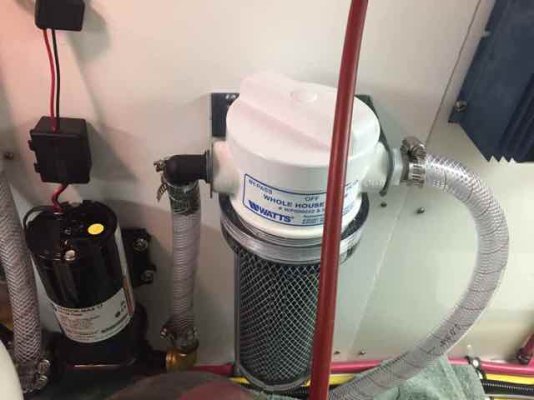Our marina water is on a well; not bad, but not city water. Many marinas around here are on their own well.
We filter our water as we fill our tank, after having treated the tank and water lines with the clean-up routine (chlorine additive, during Spring commissioning and then again periodically as/if required).
We use a pair of portable whole house filter housings, one Big Blue and one GE Smartwater (just 'cause that's what I acquired along the way). First is full size, the second is a slimline design. First in line uses a Pentek DGD-2501 dual-gradient sediment filter element (25/1 micron), and the second is a Pentek FloPlus-10 Carbon Block filter element (.5 micron).
This approach is a bit of overkill for tank water, but it's easy enough to do in the meantime. When I get around to it, I'm intending to add drinking water filters/faucets (e.g., Moen Choiceflo 9600, which we now have at our home), so the carbon block would move to that.
I use only the Big Blue/2501 filter on shorewater, because the second filter (the carbon block) degrades water pressure too much... and because we usually only use the shorewater connection if we happen to be somewhere that provides city water.
We also usually keep a Pur pitcher of drinking water in one of our fridges, but mostly that's just to keep quality cold water on hand.
-Chris



